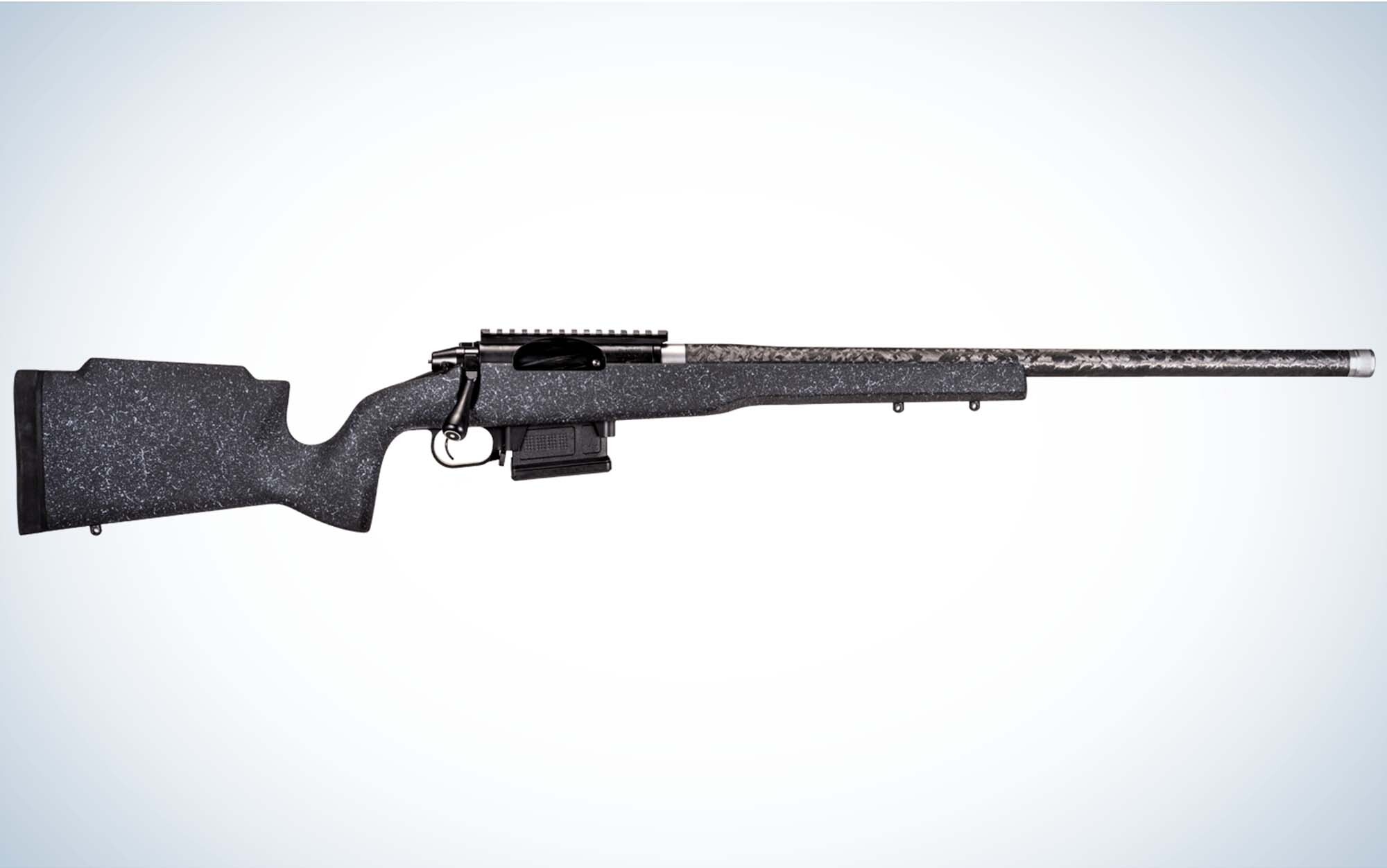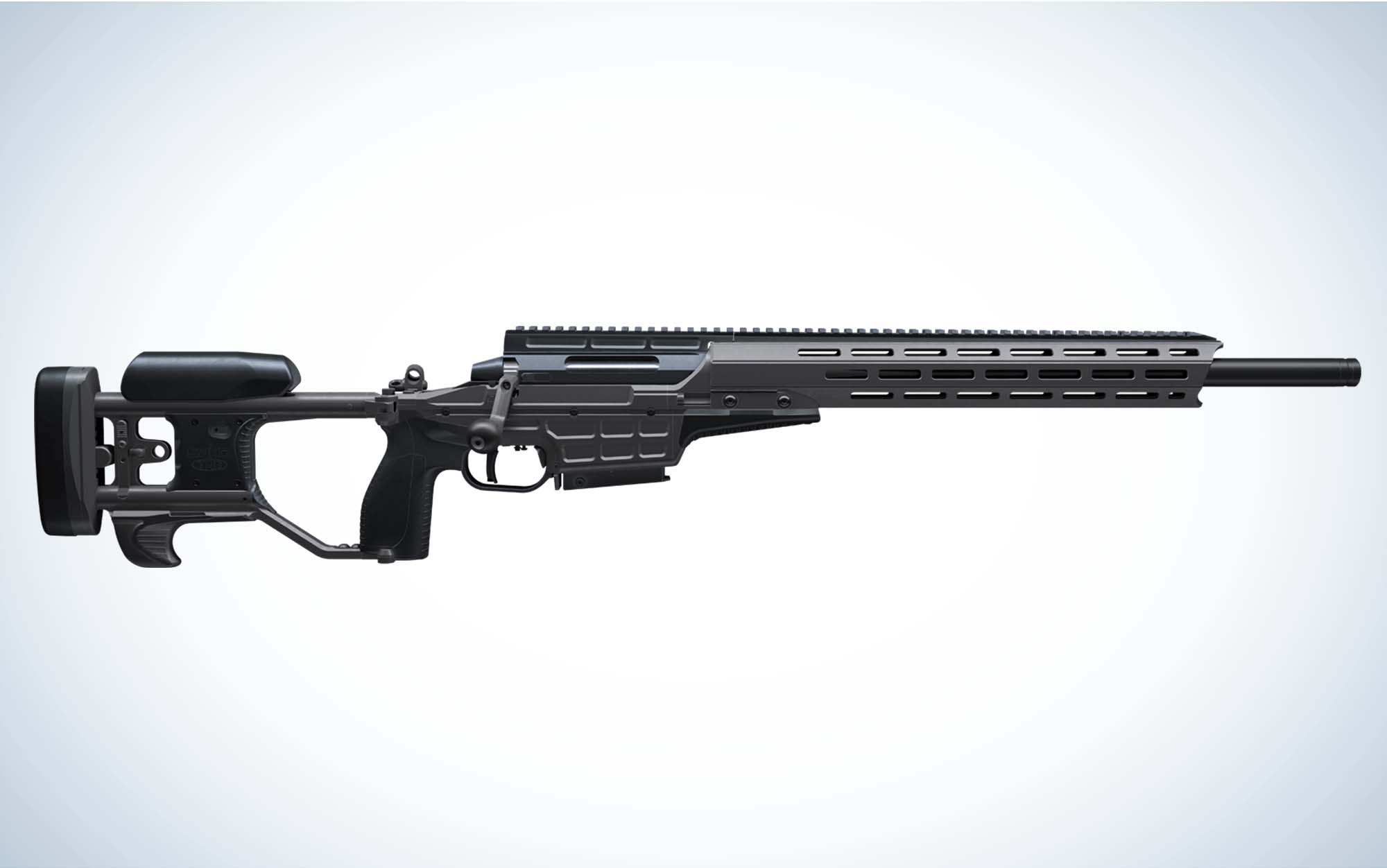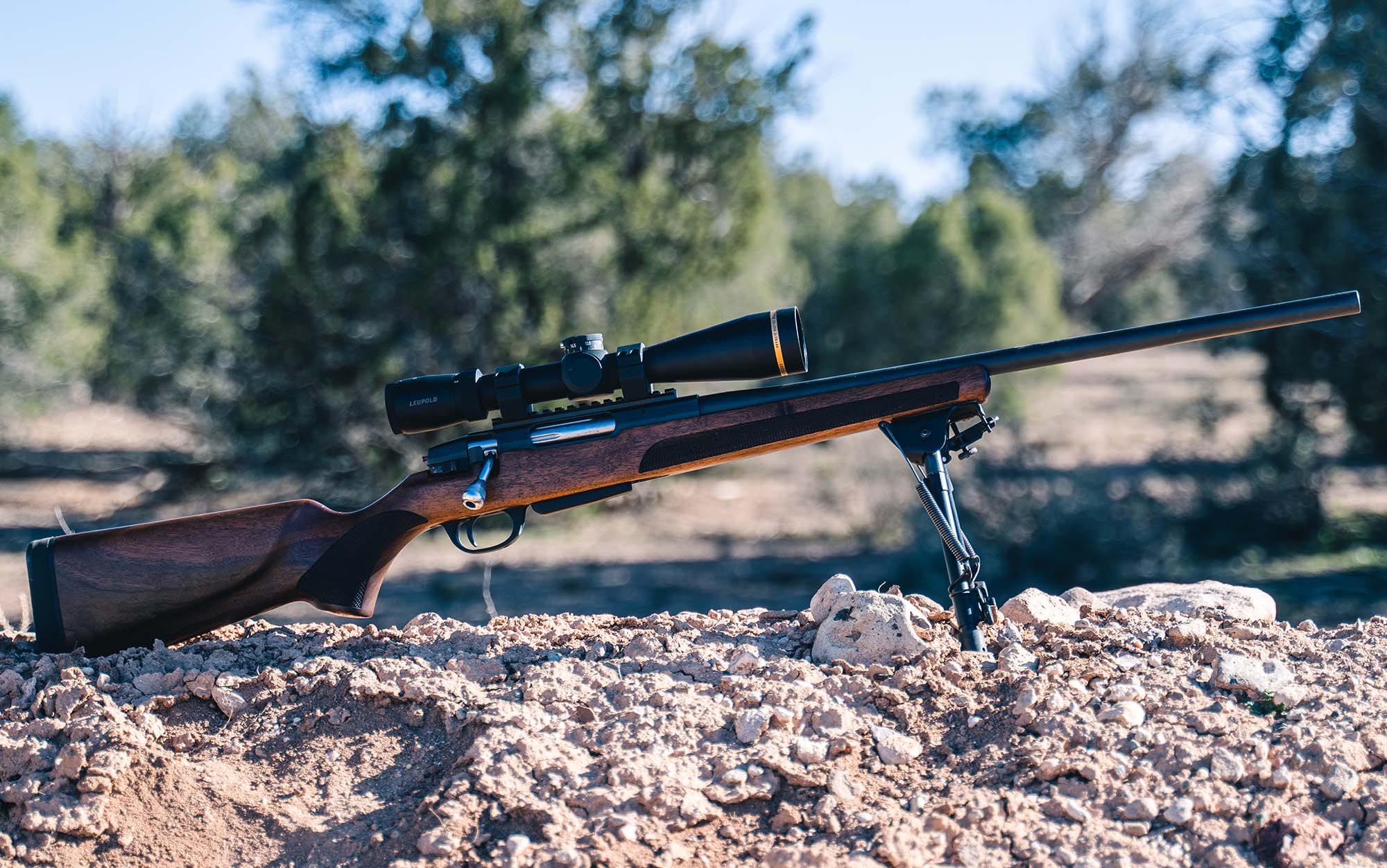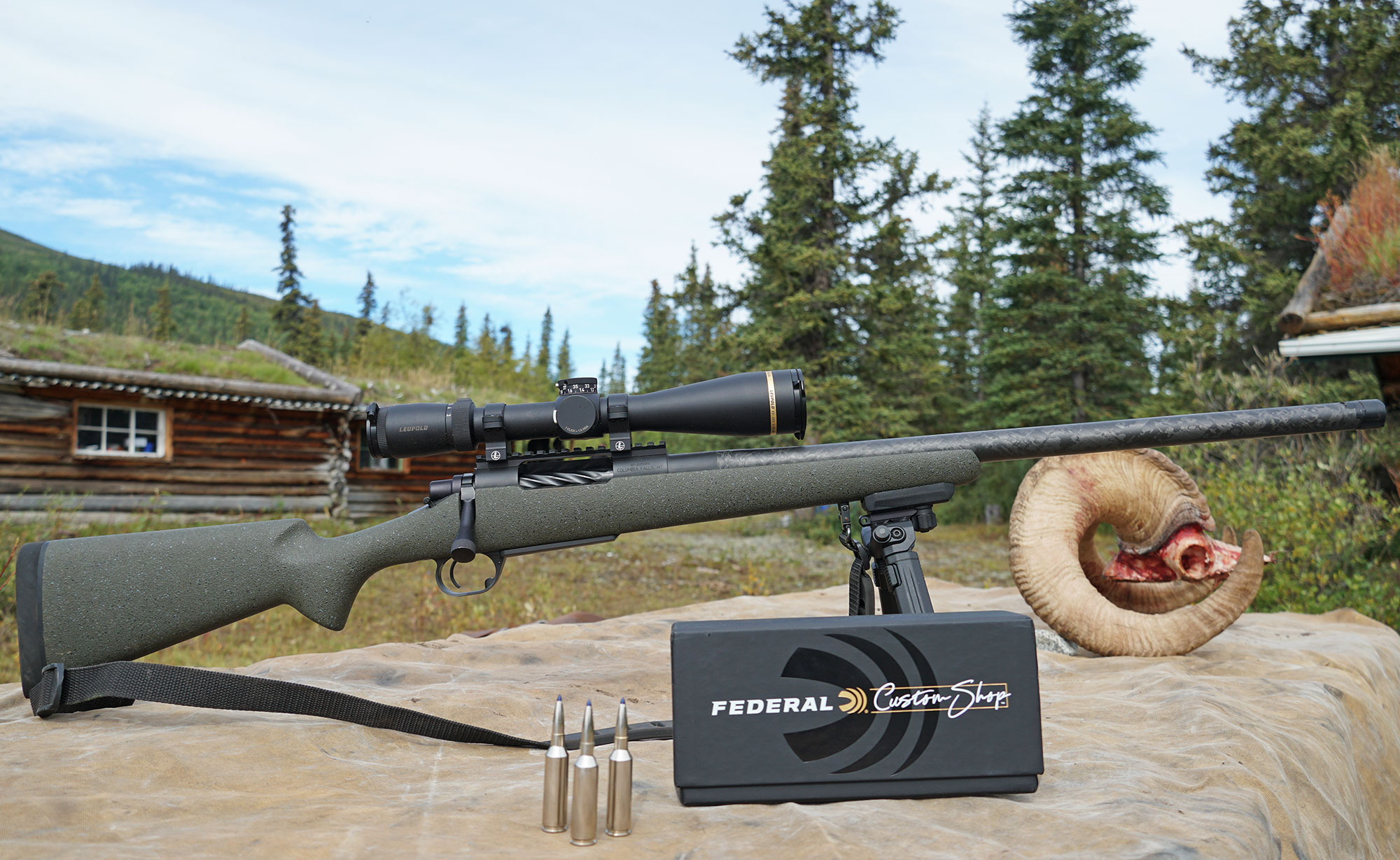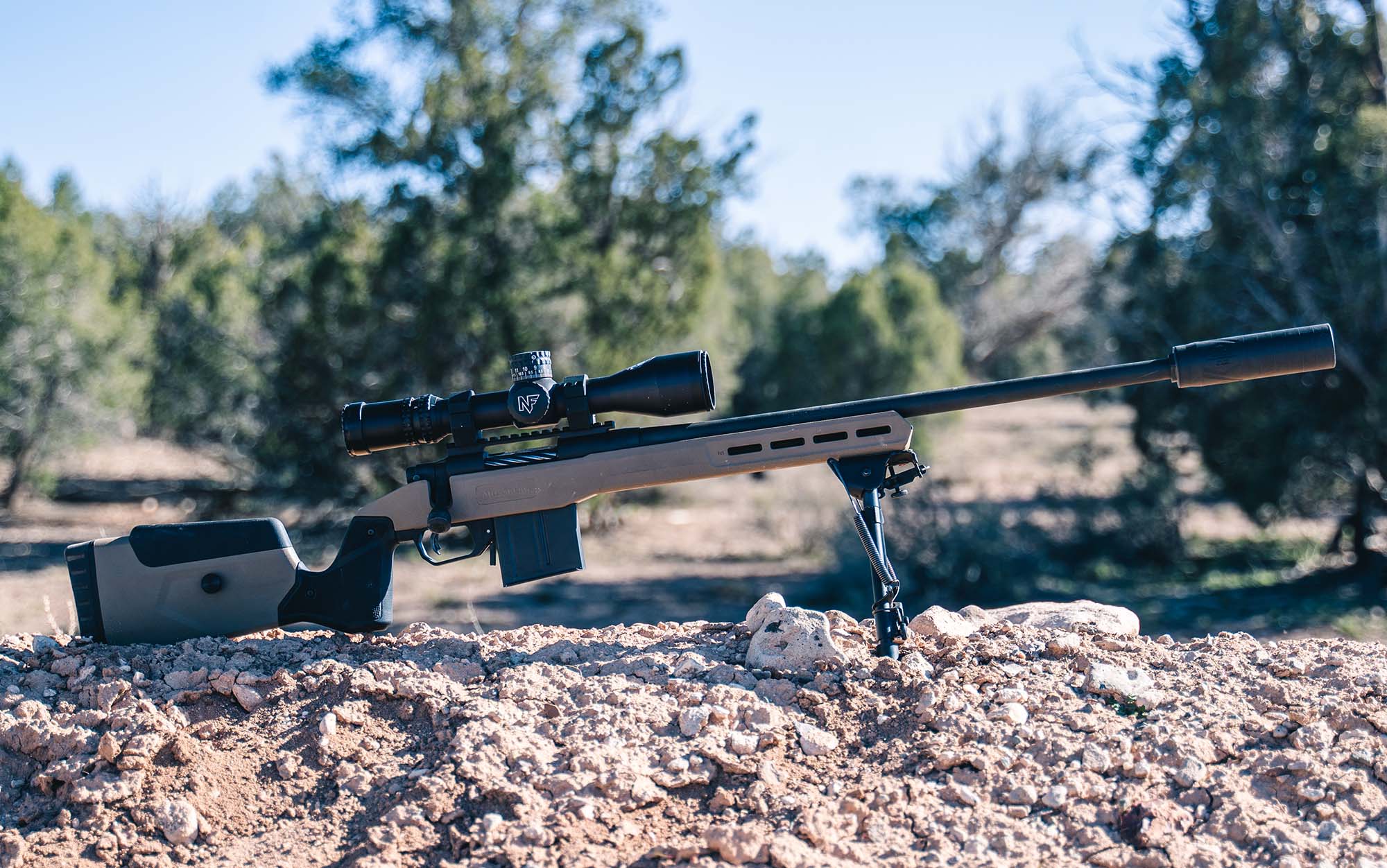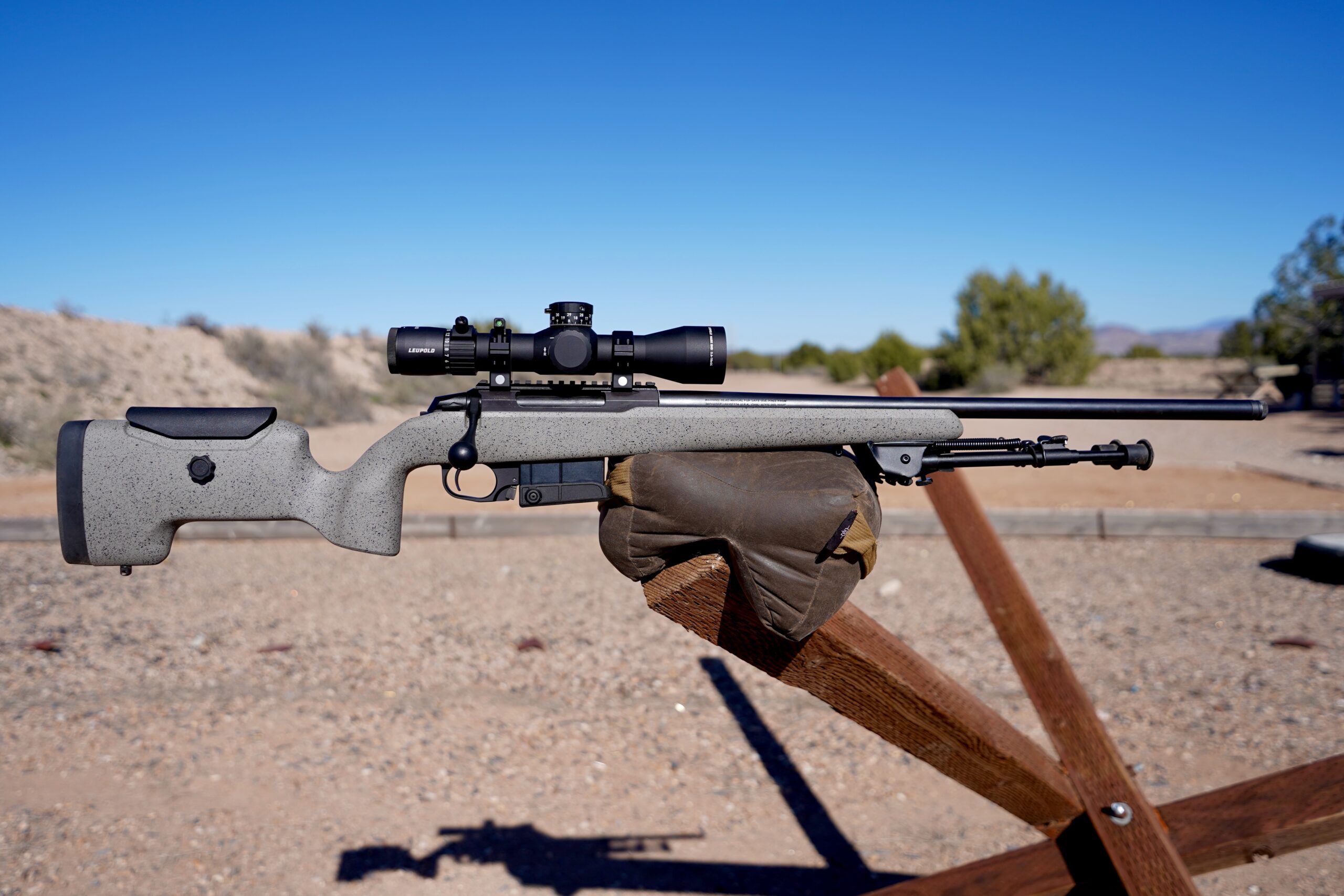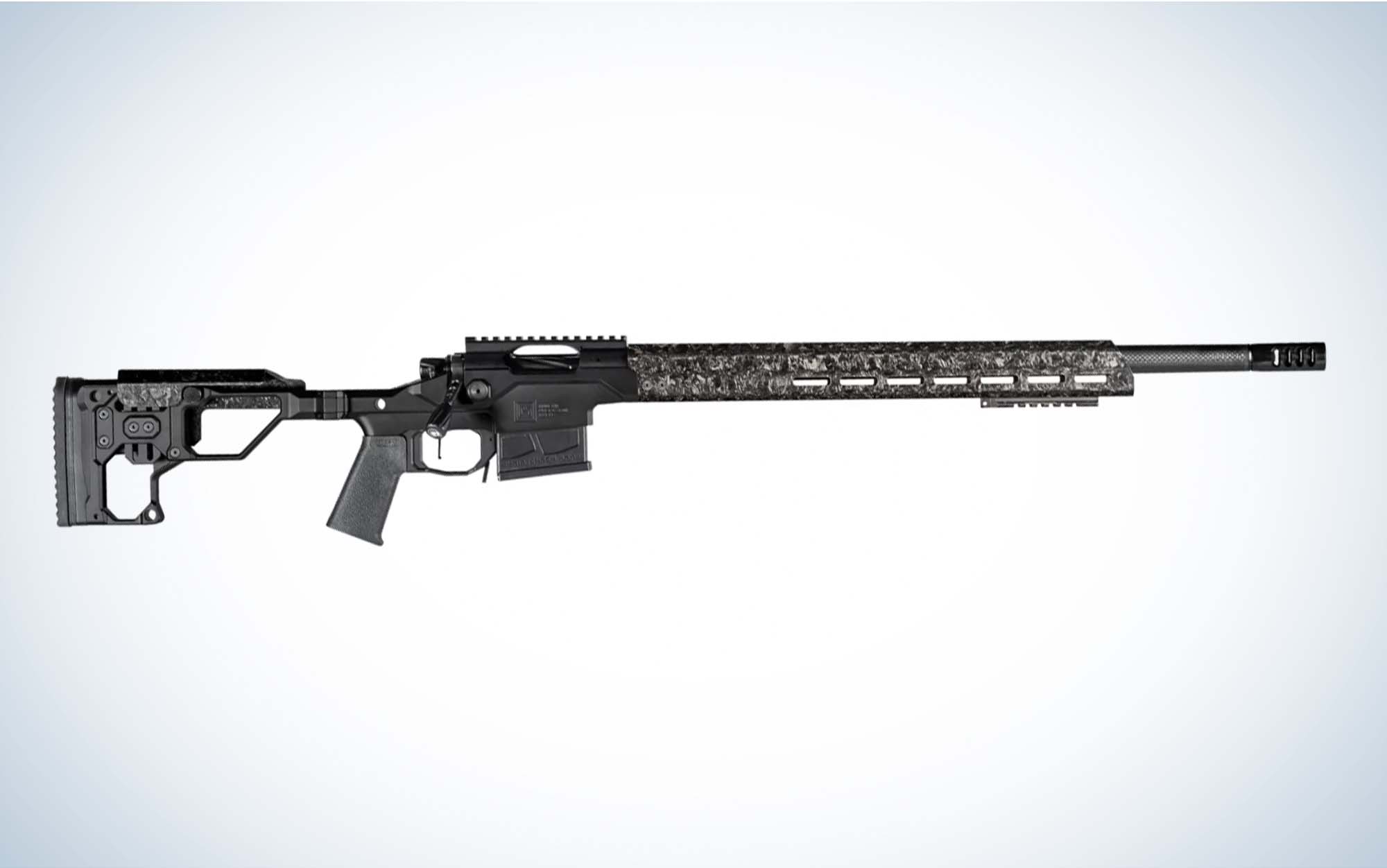We may earn revenue from the products available on this page and participate in affiliate programs. Learn More ›
Published Sep 27, 2023 7:26 PM
When looking for the best 6.5 Creedmoor rifle the world is your oyster. That’s the good news. The downside, such as it is, is to narrow your selection considering all the excellent options available.
First off, forget what the haters say. The 6.5 Creedmoor is not only one of the best cartridge introductions of the modern era, but it is on track to become one of the best rifle cartridges of all time.
Is this just because it has been hyped to death by influencers who sport more mascara and beard oil than ballistic knowledge? Or because Hornady pays gun writers like me to sing its praises? Perhaps some woke cabal in the gun industry trying to cancel your granddaddy’s favorite deer caliber?
As absurd as these notions are, it has long been a fad to denigrate the 6.5 Creedmoor while spouting conspiracy theories concerning its continued popularity. Every time it is mentioned in a story on the best deer rifles or cartridges, or the best long-range rifles and calibers, or wins some accolades in our annual gun tests, a not-insignificant number of folks lose their collective mind. And lord help you if you do something like use it to take a grizzly bear, as Outdoor Life staff writer Tyler Freel did this spring.
Best 6.5 Creedmoor Rifles By Type
What Makes the 6.5 Creedmoor So Good
I hate to break it to those folks, but the 6.5 Creed—introduced back in 2007—isn’t going anywhere. The reason for its success is that it was the right cartridge at the right time. It has capitalized on today’s excellent high BC bullets for hunting and target shooting, has benefited from numerous new propellants that are temperature insensitive and consistent, and pairs well with today’s generation of rifles that are inherently accurate.
The 6.5 Creedmoor is the poster child for Modern Cartridge Design, the series of tenets guiding how engineers fashion today’s best cartridges to optimize accuracy and efficiency. This, along with its mild recoil, is why it evolved from a niche target cartridge into an all-around superstar.
How We Chose the Best 6.5 Creedmoor Rifles
The most difficult task that the Outdoor Life staff faced when picking the best 6.5 Creedmoor rifles was culling the field to just ten. We’ve shot so many 6.5 Creeds that have performed in a stellar fashion over the years that we ended up leaving some of our favorites on the cutting-room floor.
We focused instead on those we’ve shot recently to provide some utility to the reader looking to make a purchase. These rifles span a range of intended purposes and budgets. Staff writer Tyler Freel, another 6.5 Creed aficionado, helped me curate this list.
Best 6.5 Creedmoor Rifles: Reviews and Recommendations
Best Technical Deer Hunting Rifle: Proof Research Elevation MTR
Specs
- Action: Two-lug bolt
- Stock: Carbon fiber, raised comb
- Barrel: Carbon fiber, 24 inches, threaded 5/8-24
- Capacity: 5+1 (Detachable AICS magazine)
- Weight: 6 pounds, 10 ounces
- Trigger: TriggerTech trigger, user adjustable
- Price: $3,499
Pros
- Accurate
- Lightweight
- Durable
Cons
The Proof Research Elevation MTR (Mountain Tactical Rifle) is a modern deer rifle that borrows heavily from the tactical and competition shooting world. The result is a high-performance rig that is accurate, portable, and able to handle the most demanding hunting conditions.
The Elevation MTR is built on a Zermatt Arms Origin action, which is known for its tight and consistent tolerances, reliability, and accuracy. Proof, of course, puts one of its carbon-fiber barrels on the MTR and the mating of the Zermatt and barrel delivers exceptional accuracy. In fact, I’ve used this rifle in competition and know that it can place precise shots on distant targets under demanding time constraints and from practical field positions.
The stock is also of Proof’s design and is made of carbon-fiber as well. The stock has a raised comb and vertical pistol grip, both of which are common on tactical rifles. The comb helps align the shooter’s eye with larger optics that tend to sit higher on the rifle (the action has a full-length Picatinny rail) and the vertical grip enhances the shooter’s control over the rifle and the trigger pull.
The MTR uses detachable box magazines and will feed from AICS pattern mags. It ships with a single polymer magazine. The rifle feeds with dead-nuts reliability and can handle dust, moisture, and other debris without any issues.
Best Deer Rifle Under $600: Winchester XPR
Specs
- Action: Bolt action
- Stock: Composite, Black
- Barrel: 22 inches
- Capacity: 3+1
- Weight: 6 pounds 12 ounces
- Trigger: 4 pounds, 2 ounces (measured)
- Finish: Black Perma-Cote
- Price: $540
Pros
- Affordable
- Smooth action
- Durable and weather resistant
- Good trigger
Cons
- Buttstock is noisy
- Homely aesthetics
After hunting with several Winchester XPR rifles over the years, I’ve found them to be one of the most consistent and reliable budget hunting rifles out there. They have smooth, fast-running actions, good triggers, and they shoot well. The XPR isn’t going to compliment a rifleman’s vanity with good looks, but it’s a workhorse that will get the job done at a great price. Chambered in 6.5 Creedmoor, it’s a rifle that’s equally suited for new and seasoned hunters. I own one that has taken six Dall rams, about a dozen caribou, four or five blacktail deer, a couple black bears, a moose, and a huge grizzly bear. If that isn’t field-proven, I don’t know what is.

The XPR is available in a variety of configurations, but the basic model has a black composite stock and a black Perma-Cote (Cerakote-like) finish. It’s got a three-lug bolt with a large-diameter bolt body and rebated lugs that are similar to those on the Ruger American. The bolt has a short 60-degree throw and strips rounds from a single-stack detachable magazine. The Winchester XPR stock is in line with the rifle’s price. It’s a durable composite stock with a somewhat blocky fore-end and pebbly texturing on the grip and sides of the fore-end. The butt has a nice recoil pad, but the butt of the stock is hollow and loud when scratching brush. With good factory ammo, you can expect an XPR to average around 1.4-inch five-shot groups—which isn’t spectacular, but completely adequate. — Tyler Freel
Most Accurate: Sako TRG 22 A1
Specs
- Action: Three-lug bolt
- Stock: Aluminum chassis folder
- Barrel: 26 inches, 1:8 twist, cold-hammer forged
- Capacity: 10+1 (short-action cartridges)
- Weight: 12 pounds 7 ounces (empty, no mag, with three M-LOK sections installed)
- Trigger: Two-stage, user-adjustable, user-serviceable, 2 pounds 10 ounces (measured)
- Price: $5,400
Pros
- Excellent accuracy
- Great ergonomics
- Field serviceable
- Rugged
Cons
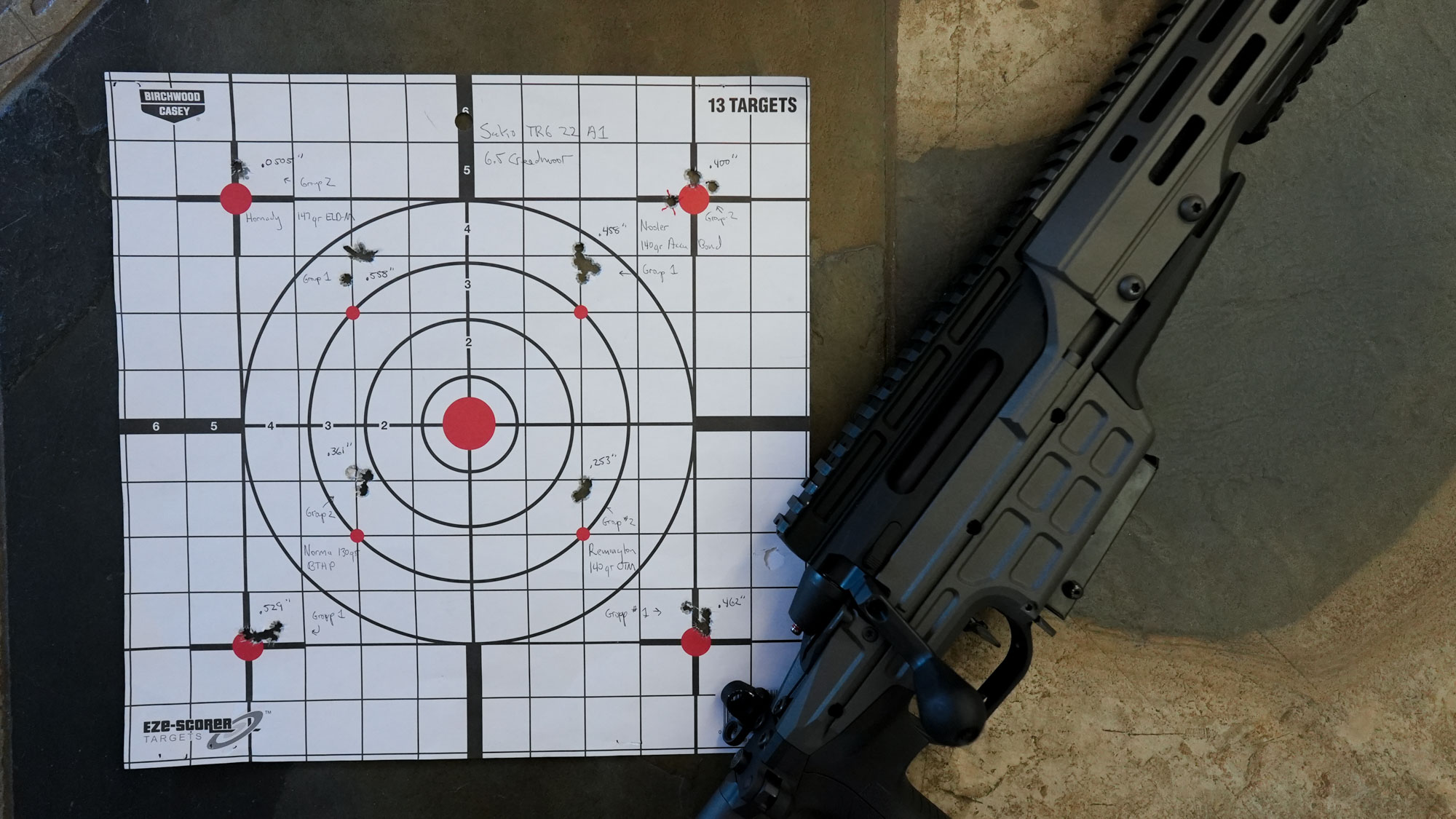
Of all the rifles I’ve tested over the years the Sako TRG 22 A1 is the most accurate of the lot. The average 5-shot group size with four types of ammunition was just .384 inches, with the smallest groups measuring five-hundredths of an inch (.050 inches) center to center. I reviewed this Finnish sniper rifle not long ago, getting into the nitty-gritty of its construction to shed some light on why it shot so well.
Here’s the short version: The Finns have an established tradition of making accurate rifles with excellent ergonomics and go-to-hell-and-back durability. When you consider their cultural roots as outdoorsmen (the Finns were among the last people on earth to transition away from a hunter-gatherer lifestyle) with their need to fend off large aggressive neighbors (hello Russia) it is no surprise they take rifle building seriously.

There’s a bit of sorcery with Sako’s ability to make cold hammer-forged barrels that deliver mind-boggling accuracy. No other rifle maker is their equal with this technique. And their product designers and engineers have a deep understanding of the need for a rifle to correctly fit the shooter for peak performance.
You get a feel for this with any Sako or Tikka hunting rifle, but it really comes to fruition in the TRG series—the 22, 42, and M10.
In the A1 trim, the TRG 22 employs a chassis stock that borrows heavily from the Sako M10. It has elegant and easy-to-use controls to adjust the stock to the shooter’s specific needs. The trigger adjusts for pull weight, reach and the orientation of the shoe.
The action and magazine pair beautifully for flawless cycling under any condition, and when the shooter trips the trigger, they can be confident that the bullet will strike where intended.
Best Budget Deer Rifle: Stevens 334
Specs
- Action: Bolt action, detachable magazine
- Stock: Walnut
- Barrel: 22 inches
- Capacity: 3+1
- Weight: 7 pounds 14 ounces
- Trigger: 5 pounds, 10 ounces (measured)
- Price: $399
Pros
- Great Value
- Accurate
- Good handling
- Smooth action
Cons
The best value in budget hunting rifles we’ve seen in 2023 is undoubtedly the Stevens 334 Walnut. This affordable Turkish-made rifle was introduced with a good-looking walnut stock and impressed us at our annual gun test. It uses a short-throw three-lug bolt that’s similar to other budget rifles like the Winchester XPR and Ruger American. The 334 uses a detachable polymer 3-round magazine that fits just proud of flush with the stock. The barrel is free-floated and the stock utilizes an aluminum bedding block into which the recoil lug is clamped.
The Stevens 334 Walnut doesn’t offer much in the way of pomp, but those who like a wood-stocked rifle at a good price would do well not to underestimate this one. Despite having triggers that are pretty awful, both of the 334’s that I’ve tested have been more accurate than they have any right to be. Extensive shooting at our gun test gave us an average 5-shot group size of 1.105 inches and our best 10 groups averaged .724 inches. The more we operated this rifle from field positions, the more we liked it. It handles intuitively and points quickly, making it great for just about any type of hunting. — T. F.
Best Lightweight Hunting Rifle: Proof Glacier Ti
Specs
- Action: Titanium two-lug
- Stock: Carbon fiber
- Barrel: Carbon fiber, 24 inches, 1:8 twist, threaded 5/8-24
- Capacity: 4+1
- Weight: 6 pounds, 2 ounces
- Trigger: 2 pounds, 8 ounces (measured)
- Price: $7,499
Pros
- Accurate
- Lightweight
- Smooth
Cons
I’ve shot many Proof Research rifles over the years and all have been hammers. Credit the obsessive attention to detail that goes into their manufacturing. Among other things, that encompasses the quality of the materials Proof uses, the tight tolerances held in their chambers and rifling process, the overall fit and finish, and the general design.

I’m not the only fan on staff. Alex Robinson, OL’s editor-in-chief, used a Proof Glacier to shoot his Dall Sheep last fall. This rifle, introduced back in 2019, was one of the stars of that year’s gun test. Ultralight rifles and excellent accuracy usually don’t go together, but the folks at Proof worked their magic, and our sample averaged .677-inch five-shot groups while weighing just north of 6 pounds.
It had an outstanding 2.5-pound trigger and is blessed with fabulous stock ergonomics and an action that cycles with the smooth assuredness of a safe door swinging shut.
For a serious mountain hunter who can’t afford to have anything go awry on what might be the animal of a lifetime, the Proof Glacier Ti is the ideal companion.
Best Long-Range, Competition: Accuracy International AT-X
Specs
- Action: 6 lug, 60-degree bolt throw
- Capacity: 10 (double stack AW magazine)
- Barrel Length: 24 inches, 1:8 twist, threaded 5/8-24
- Stock: Fixed aluminum chassis
- Weight: 13 pounds
- Trigger: 10.4 ounces (measured)
- Price: $4,250
Pros
- Outstanding reliability
- World-class accuracy
- Mad street cred
Cons
This recently introduced rifle from Accuracy International won an Editor’s Choice award in the 2022 gun test owing to its excellent accuracy (ours turned in five-shot groups that averaged .456 inches across a variety of ammo), fabulous ergonomics, and combat-ready reliability.
As you might know, the original audience for Accuracy International’s rifles was military and law enforcement professionals who needed world-class precision in a rifle that could perform under extreme adverse conditions. But plenty of civilian shooters took to AI rifles too, and the AT-X was designed with them in mind.
While the AT-X draws heavily on AI’s history of catering to snipers, it is configured for competition shooters, who have been running it with great success in a variety of long-range matches.
The fore-end has a flat bottom that incorporates an ARCA dovetail that extends straight back to the magazine well. The action uses AI’s six-lug system (two rows of three lugs) that has been a mainstay of the company for decades.
The snappy 60-degree bolt throw helps the shooter cycle the rifle quickly and the three-position safety mounted on the bolt shroud is smooth, positive, and bomb-proof.
By loosening a single set screw, the shooter can swap barrels. Our sample was chambered in 6.5 Creedmoor, but barrels can be had in .308 Win., 6mm Creedmoor, 6 BR, and others.
The two-stage trigger provides outstanding control. The trigger on our rifle broke at 10.4 ounces, has a flat face and is adjustable for trigger reach—one of the many dimensions that the shooter can alter for a custom fit. The rifle also comes with a heavier spring for the trigger that will set the minimum break weight to 1.5 pounds.
Best Long-Range, Budget: Mossberg Patriot LR Tactical
Specs
- Action: Two-lug bolt
- Stock: Synthetic chassis
- Barrel: 22 inches
- Capacity: 10
- Weight: 8 pounds, 11 ounces
- Trigger: 2 pounds, 9 ounces (measured)
- Price: $1,085
Pros
Cons
This is one of the newer 6.5 Creedmoor rifles on the market. Mossberg introduced the Patriot LR tactical early this year and we got a chance to put hundreds of rounds through one during our annual gun test.
We were impressed with what we saw. The LR Tactical mates the familiar two-lug Patriot action with a heavy barrel and chassis stock to create an affordable and capable long-range rig. It shot well enough, in fact, to walk off with a Great Buy award in the precision rifle category.
This LR Tactical configuration suits the workmanlike Patriot action to a tee. The rifle turned in the tightest group of the test, a .247-inch five-shot group with Federal 140-grain Berger Hybrids and averaged .582-inch 5-shot groups with a variety of ammo overall.

The rifle also handles surprisingly well. Though the barrel is heavy, the rifle isn’t cumbersome. It weighs 8.75 pounds without a scope and was easy to maneuver in and out of position during the practical shooting portion of the evaluation.
The action isn’t the smoothest, but we were still able to cycle it quickly while running through a variety of drills. The rifle takes AICS pattern magazines, which are widely available and come in varying capacities. The effective paddle magazine release made reloads a snap.
The stock adjusts for cheek height and positions the hand nicely thanks to its vertical grip. The texturing on the grip is fairly aggressive and gives a solid purchase. The chassis stock also has slots to mount M-Lok compatible accessories.
Best For $2000: Springfield 2020 Redline
Specs
- Action: Two-lug bolt
- Stock: Grayboe Trekker composite
- Barrel: Carbon wrapped, 20 inches, threaded 5/8-24
- Capacity: 3+1
- Weight: 8 pounds 4 ounces
- Trigger: Triggertech (adjustable), 3 pounds, 2 ounces (measured)
- Price: $2,190
Pros
- Compact and light
- Accurate
- Suppressor-ready
- Good ergonomics
Cons
- Excessive clearance between stock and barrel
Following Springfield Armory’s 2020 Waypoint rifle, the 2020 Redline uses the same action, but presents a more compact, lightweight, and streamlined package for the mountain hunter. The most striking feature of the 2020 Redline is the Grayboe Trekker stock, which has a target-style elevated cheek piece and vertical pistol grip, but a cut-down and hollowed-out buttstock. The fore-end is short with a flat bottom for resting on a bag or mounting a bipod and makes no contact with any part of the barrel. The stock provides a stable, modern shooting platform while cutting weight. It even features an inset bubble level in the tang.
The 2020 Action has a two-lug bolt with a 90-degree throw and uses a robust Sako-style extractor located in the starboard bolt lug. The bolt is nitride coated and other steel parts are Cerakoted in a dark green finish. The rifle is available in 16-inch and 20-inch barrel lengths, but both use a carbon-wrapped barrel that’s capped with a removable muzzle brake and is suppressor-ready with ⅝-inch x 24 threads.
I’m right in the middle of testing the 20-inch model in 6.5 Creedmoor and I’m finding that with good ammo, it meets Springfield’s “¾ MOA” accuracy guarantee for three-shot groups—although we don’t place much weight on accuracy guarantees. Though I’m just getting started with some thorough accuracy testing with factory ammo, I found an existing handload I have that shoots well through the rifle. I recorded nine 5-shot groups with 143-grain Hornady ELDX bullets on a charge of H4895 that averaged .831 inches and printed 10-shot groups of .938 and .903 inches. I took that load and killed a nice Dall sheep with the rifle in August. —T. F.
Best for NRL Hunter: Tikka T3x UPR
Specs
- Action: Two-lug bolt
- Stock: Glass fiber with adjustable cheek piece
- Barrel: 23.7 inches, 1:8 twist, cold-hammer forged, threaded 5/8-24
- Capacity: 10+1 (short-action cartridges)
- Weight: 7 pounds, 14 ounces (measured)
- Trigger: Single-stage, user-adjustable, 3 pounds 13 ounces (measured)
- Price: $1,299
Pros
- Accurate
- Smooth handling
- Quality workmanship
Cons
The 6.5 Creedmoor is the go-to cartridge for the NRL Hunter series, and among all the rifles that qualify for the factory division the Tikka T3x UPR is at the top of the heap.
For those not familiar with the series, it was created to let hunters put their skills and equipment to the test. Shooters start from a blind position and must find, range, and engage targets on the clock using gear that is suitable for big game and doesn’t exceed specified weight limits. In the factory and light divisions, that figure is 12 pounds and includes the rifle, optic, bipod, and other accessories one might mount to the gun.
The accuracy and handling of the T3x UPR matches well with the fast-paced stages one encounters in the series, where the targets typically range from 200 to 800 yards away.
I recently reviewed the Tikka T3x UPR, breaking down the features that make it such a good rifle—especially for the price.
In short, the rifle has an excellent stock that is designed to be steady in field positions. Its shape works whether shooting prone or bracing it on something like a rock, cattle gate, or branch. The adjustable trigger is terrific. And the rifle, like others in the Sako/Tikka line, has intuitive controls, feeds and cycles ammo reliably, and is accurate.
The flexibility the rifle displays in NRL Hunter makes it a good choice for hunting and long-range shooting, too. The accuracy of my sample has been outstanding, shooting 5-shot groups averaging .633 inches.
Best Long-Range, Lightweight: Christensen Arms MPR
Specs
- Action: Two-lug bolt
- Stock: Lightweight folding chassis
- Barrel: Carbon wrapped, 22 inches, 1:8 twist, threaded 5/8-24
- Capacity: 10
- Weight: 8 pounds, 2 ounces
- Trigger: User adjustable TriggerTech
- Price: $2,400
Pros
Cons
The Christensen Arms MPR looks futuristic but fills a traditional role—that of a beanfield rifle. The term was coined by former Outdoor Life shooting editor Jim Carmichel when reviewing the hyper-accurate bolt-actions made by Kenny Jarrett. Jarret is one of the godfathers of hunting rifle accuracy and incorporated benchrest rifle technology into his exquisite firearms.
Why “beanfield?” Well in some stretches of ag land down south those fields that deer favor can be many hundreds of yards in length, and when the beans have grown high, they don’t leave much of a deer’s body as a target. Thus, you need a rifle that reaches out with pinpoint accuracy to guarantee success.
Jarrett still makes those wonderful rifles, but their stratospheric price tags—many are north of $10,000—put them out of reach of all but the well-heeled or financially irresponsible.
The Christensen MPR doesn’t look much like Kenny’s creations, but what it has in common is the ability to shoot tiny groups. When the MPR debuted I tested it in 6.5 Creedmoor and produced five-shot groups with factory ammo that averaged .557 inch across a wide variety of brands and bullet weights. Several of the loads I shot from Norma, Barnes and Hornady averaged in the .4s.
For beanfield hunting, the flat-bottomed fore-end makes for a stable platform when positioned in a blind or stand. Without question, it is one of the best lightweight long-range rifles in production.
FAQs
Is it worth buying a 6.5 Creedmoor rifle?
It is difficult to argue against purchasing a 6.5 Creedmoor in light of its many virtues. They are accurate and affordable. There is a wide selection of excellent ammunition available for different tasks. The cartridge is easy to reload. The recoil is mild and yet it is more than adequate for taking on big game.
What is the best 6.5 Creedmoor grain size?
Bullet weights in the 6.5 Creedmoor typically range from 120 to 147 grains. Bullets heavier than that are inefficient in the cartridge, and anything lighter would fail to take advantage of the 6.5 Creed’s penchant for heavy-for-caliber bullets. The most popular bullets are those weighing 130, 135, 140, and 143 grains.
What are the negatives of the 6.5 Creedmoor?
While fully capable on big game up to and including elk and moose, the 6.5 Creedmoor is no smasher. It isn’t the best choice for stopping potentially dangerous game like large bears.
Is a longer barrel better for accuracy?
Not necessarily. The benefit of a longer barrel—say 26 inches or more—is an increase in muzzle velocity which helps the bullet stay supersonic for a greater distance. The extra speed also conveys a moderate benefit in terms of greater resistance to wind deflection. That’s why extra-long barrels are common in ELR matches.
Which barrel twist is faster?
The twist rate on barrels is expressed as a ratio of the length required for a bullet to complete one full rotation in a barrel. So a barrel with a 1:7.5 twist is faster than a 1:8 twist. The SAAMI spec for the 6.5 Creedmoor is a 1:8 twist but you’ll sometimes see faster twist rates, particularly on barrels designed for long-range competition.
How many rounds is a 6.5 Creedmoor barrel good for?
Because the 6.5 Creed is a mild round the barrel life is excellent. With normal use you can expect more than 2,000 rounds from a barrel.
What is a 6.5 Creedmoor good for killing?
The 6.5 Creedmoor is an ethical cartridge on all manner of big game and only falls short on thicker skinned and dangerous game. I’ve used it around the globe on everything from large African plains game to sheep in Mongolia to elk and mule deer out west. I’ve never felt under-gunned carrying it.
Final Thoughts on the Best 6.5 Creedmoor Rifles
Culling the field of good 6.5 Creed rifles down to ten is no easy task. The truth is that it is unusual to find a 6.5 Creed that doesn’t shoot well. While some rifles exhibit next-level accuracy, which we highlighted here, most are more than adequate for the majority of hunting and shooting tasks.
Choosing the best 6.5 Creedmoor rifle for your needs then hinges on ergonomics, aesthetics, your specific requirements, and budget. Happily, there’s no shortage of rifles out there and with a bit of poking and prodding you’re sure to find one that is ideal for you.

